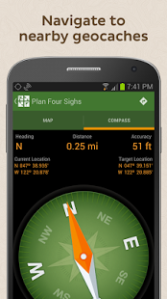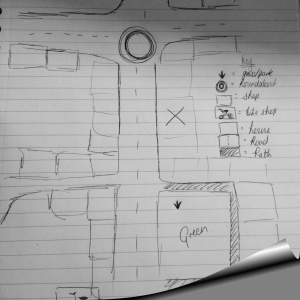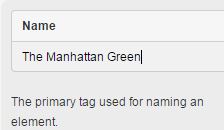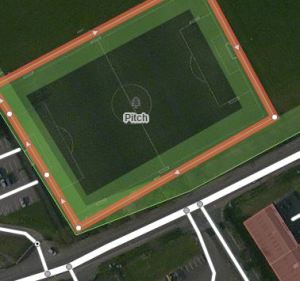Digital Humanities-review of a digital tool
Here is my review of a digital tool of the application supporting geocaching. I chose this tool as I wanted to utilize a lightweight tool that would cross the borders between digitization and reality. I feel that the geocaching tool achieves this as it allows the user to use GPS mapping technology, share experiences and connect about a real life treasure hunt, the tool is just that, a tool,not the entire activity and has a reinforced sensation of real life fulfillment upon completion(a cache is found). I liked this concept as I feel it is lighthearted and fun much like my wider project.
My tool
The digital tool that peaked my interest was “Geocaching”. I came across “Geocaching” from suggestions on Pinterest. “Geocaching” has become an international tool/game with the purpose of outdoor play with team-building, problem-solving and other outcomes. The tool I am reviewing is the geocaching app on iphone and android,more specifically to begin,the intro free version. My wider project would be explained by my wordpress to examine the mind to a degree but attain an optimistic light hearted space. My aim here is to find a good crossing between the digital and the real world again as I have stated.
Website
For more information on the application it is reinforced with a website.I really liked the website and sound the interface really easy to use. The website is equipped with different media from text to video which I like. The videos explain that “Geocaching is an online adventure where you can use your GPS or your phone to track a nearby “cache” which can be anything using the GPS location after setting up a free account.The aim is then to find an object of whichever shape or size, sign the logbook or even trade “nic-naks”. I really like how the website gives a full explanation of the idea of this tool as it is different and is incorporating the digital world with the real life world and forcing exploration as opposed to just simply staring at a screen and find the concept of international digital co-operation very exciting. I feel that it is better that this information is explained furthermore on the website as opposed to the actual tool itself as I believe it would weigh down the tools lightweight image.
Articles
For further research on this tool I read online articles, all of which were very positive and encourage the reader to download the app and participate.The tool itself has a rating of 4 on the android official website.
Do these reviews indicate that the tool matches my research needs?
As I have stated my research needs here were simply to find a simple fun tool and was very pleased when I came across this integration. I find that the reviews do indicate that the application meets my needs of integration.
The future
In regards to a road map for this tool I feel like it has a good future ahead of it as currently has six million members in a world wide activity I think that this can only grow. I think that as photograph
logging has become such a huge area of the media currently that a development of perhaps a picture extension to the application solely for encouragement of the activity could also be a possibility.
The website has a forum also outlining updates currently and updates to come highlighting how quickly the development process is as well as having a blog again showing great integration with both people and the collaboration of digitization and reality/nature. The tool was born in 2000 and combined from geo meaning earth and cache from french meaning temporary storage,commonly used in computing makes the birth of the combined term perfect.
Originally the activity was restricted to those already expert in GPS usage such as hikers. A web developer called Jeremy Irish discovered this child of hiking and treasure hunting and decided to establish geocaching.com broadening the activity to the world to use. This has developed in fifteen years and is surely only going to further develop.Irish’s development shows the usage of open source in development and usability engineering.
With this tool, after signup you then have a profile,with this profile you can then log your own experiences and caches which can be exported to be shared with others as well as as i have said, participation in forums and blogs.
The application
Positives
I think that the application/tool is very well done. I think the colour scheme is calming and pleasing to the eye and upon clicking the transitions are clean cut. The GPS built in tracks the user’s current location and immediately feeds the user nearby caches. We, the user are equipped with a compass to adventurously explore the surroundings appealing to the inner child in everyone as well as the tool being a lot more accessible and easier for the average person as opposed to an experienced hiker.
I enjoy how the application is clean and lightweight yet at the same time very detailed to even specify the sizing f the caches and allow caches to be logged on a personal profile.
Criticisms
Unlike actual GPS devices wifi is always needed which can prove to be difficult or even risky if the coverage is broken on an adventure.
This application can be quite limited and request a premium update of ten euro which is rather expensive in comparison to other apps in the app store, which disappointingly is requested after completion of approximately two caches.
The GPS is not entirely dependable the the calibration can be somewhat off,sadly.
The application does not allow users to visit other users profile which can be somewhat of a downfall.
Conclusion
In summation, I think that the concept of the tool sadly exceeded the abilities. It reached my needs of bridging a gap between digital and real life yet at the same time I encountered some difficulties,as did other users of the maps not being accurate enough and some desired modifications like the ability to view other peoples profiles. Overall out of five I would give this application a three.
Below attached is a link to my contribution of The geocaching application to the DIRT directory
http://dirtdirectory.org/resources/eva-wallace





Recent Comments